DEUTERIUM
Synonym(s):D2
- CAS NO.:7782-39-0
- Empirical Formula: D2
- Molecular Weight: 4.03
- MDL number: MFCD00064812
- EINECS: 231-952-7
- SAFETY DATA SHEET (SDS)
- Update Date: 2024-12-18 14:15:32

What is DEUTERIUM?
Chemical properties
colourless gas
The Uses of DEUTERIUM
Used extensively in small amounts as tracer in the establishment of rates and kinetics of chemical reactions.
Definition
A naturally occurring stable isotope of hydrogen in which the nucleus contains one proton and one neutron. The atomic mass is thus approximately twice that of 1H; deuterium is known as ‘heavy hydrogen’. Chemically it behaves almost identically to hydrogen, forming analogous compounds, although reactions of deuterium compounds are often slower than those of the corresponding 1H compounds. This is made use of in kinetic studies where the rate of a reaction may depend on transfer of a hydrogen atom (i.e. a kinetic isotope effect).
General Description
DEUTERIUM is an isotope of hydrogen but DEUTERIUM is chemically identical. DEUTERIUM is a colorless, odorless gas. DEUTERIUM is easily ignited. Once ignited DEUTERIUM burns with a pale blue, almost invisible flame. The vapors are lighter than air. DEUTERIUM is flammable over a wide range of vapor/air concentrations. Under prolonged exposure to fire or intense heat the containers may rupture violently and rocket. DEUTERIUM is not toxic but is a simple asphyxiate by the displacement of oxygen in the air.
Air & Water Reactions
Highly flammable.
Reactivity Profile
DEUTERIUM, like hydrogen, is a reducing agent; reacts readily with oxidizing agents.
Health Hazard
Vapors may cause dizziness or asphyxiation without warning. Some may be irritating if inhaled at high concentrations. Contact with gas or liquefied gas may cause burns, severe injury and/or frostbite. Fire may produce irritating and/or toxic gases.
Fire Hazard
EXTREMELY FLAMMABLE. Will be easily ignited by heat, sparks or flames. Will form explosive mixtures with air. Vapors from liquefied gas are initially heavier than air and spread along ground. CAUTION: Hydrogen (UN1049), DEUTERIUM (UN1957), Hydrogen, refrigerated liquid (UN1966) and Methane (UN1971) are lighter than air and will rise. Hydrogen and DEUTERIUM fires are difficult to detect since they burn with an invisible flame. Use an alternate method of detection (thermal camera, broom handle, etc.) Vapors may travel to source of ignition and flash back. Cylinders exposed to fire may vent and release flammable gas through pressure relief devices. Containers may explode when heated. Ruptured cylinders may rocket.
Agricultural Uses
Deuterium is one of the three isotopes of hydrogen, the other two being hydrogen-1 and tritium. Hydrogen-1 and deuterium are naturally occurring stable isotopes, while the radioactive tritium is made artificially.
In nature, the ratio is one part of deuterium to 6500parts of normal hydrogen. Deuterium is present in water as the oxide HDO from which deuterium is usually obtained by electrolysis or fractional distillation. Its chemical behavior is similar to that of hydrogen, although deuterium compounds react slowly.
Purification Methods
Pass the gas over activated charcoal at -195o [MacIver & Tobin J Phys Chem 64 451 1960]. Purify it also by diffusion through nickel [Pratt & Rogers, J Chem Soc, Faraday Trans I 92 1589 1976]. Always check deuterium for radioactivity to determine the amount of tritium in it (see D2O below).
Properties of DEUTERIUM
| Melting point: | -254.43° (18.73 K) at 128.5 mm (triple point) |
| Boiling point: | -249.5 °C(lit.) |
| Density | 0.169 g/mL at 25 °C(lit.) |
| vapor density | 0.07 (vs air) |
| vapor pressure | 17.1-1665kPa at -254.43--234.8℃ |
| form | gas |
| color | colorless |
| Merck | 13,2956 |
| Dielectric constant | 1.3(20℃) |
| Stability: | Stable. Extremely flammable. Readily forms explosive mixtures with air. |
| CAS DataBase Reference | 7782-39-0(CAS DataBase Reference) |
| EPA Substance Registry System | Deuterium (7782-39-0) |
Safety information for DEUTERIUM
| Signal word | Danger |
| Pictogram(s) |
 Flame Flammables GHS02  Gas Cylinder Compressed Gases GHS04 |
| GHS Hazard Statements |
H220:Flammable gases H280:Gases under pressure |
| Precautionary Statement Codes |
P210:Keep away from heat/sparks/open flames/hot surfaces. — No smoking. P410+P403:Protect from sunlight. Store in a well-ventilated place. |
Computed Descriptors for DEUTERIUM
New Products
Tert-butyl bis(2-chloroethyl)carbamate (S)-3-Aminobutanenitrile hydrochloride N-Boc-D-alaninol N-BOC-D/L-ALANINOL 3-(2,4-Dimethoxybenzyl)dihydropyrimidine-2,4(1H,3H)-dione 6-Bromo-3-iodo-1-methyl-1H-indazole N-octanoyl benzotriazole 3,4-Dibenzyloxybenzaldehyde 4-Hydrazinobenzoic acid Electrolytic Iron Powder 1,1’-CARBONYLDIIMIDAZOLE R-2-BENZYLOXY PROPIONIC ACID 4-HYDROXY BENZYL ALCOHOL 1,1’-CARBONYLDI (1,2-4 TRIAZOLE) S-2-CHLORO PROPIONIC ACID (2-Hydroxyphenyl)acetonitrile 4-Bromopyrazole 5-BROMO-2CYANO PYRIDINE 5,6-Dimethoxyindanone 5-broMo-2-chloro-N-cyclopentylpyriMidin-4-aMine N-Boc-L-proline methyl ester 2-(BOC-Amino)4-picoline 1-(4-Methylphenylsulfonyl)-1H-1,2,3-benzotriazole 1-(2-Chlorobenzyl)-4-nitro-1H-pyrazoleRelated products of tetrahydrofuran

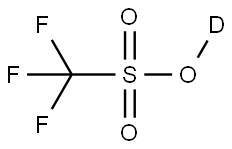


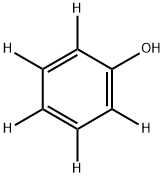
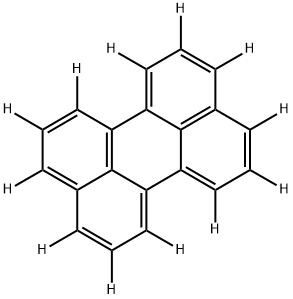
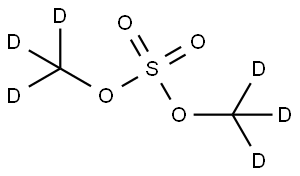
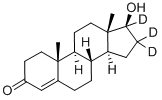
You may like
-
 Deuterium CAS 7782-39-0View Details
Deuterium CAS 7782-39-0View Details
7782-39-0 -
 55441-95-7 2 2-BIS(2-HYDROXYETHOXY)-1 1-BINAPHTHYL 99%View Details
55441-95-7 2 2-BIS(2-HYDROXYETHOXY)-1 1-BINAPHTHYL 99%View Details
55441-95-7 -
 Ste-Glu-AEEA-AEEA-OSUView Details
Ste-Glu-AEEA-AEEA-OSUView Details
1169630-40-3 -
 1446013-08-6 Fmoc-His-Aib-OH TFA 98%View Details
1446013-08-6 Fmoc-His-Aib-OH TFA 98%View Details
1446013-08-6 -
 127464-43-1 99%View Details
127464-43-1 99%View Details
127464-43-1 -
 Chloro Uracil 99%View Details
Chloro Uracil 99%View Details
1820-81-1 -
 2-ETHYLPYRIDINE 100-71-0 99%View Details
2-ETHYLPYRIDINE 100-71-0 99%View Details
100-71-0 -
 13162-05-5 99%View Details
13162-05-5 99%View Details
13162-05-5